As an emerging field, Service Design focuses on service and experience creation, curation, and implementation. As a practice, service design aims to provide a holistic service to the user through the design of systems and processes. Service design assesses and derives value from a multi-user perspective (customer, staff, and business). It is essentially channel and medium-agnostic and associates experience delivery to the operations and technology producing it. Though service design has tools and methods similar to other human-centric design fields, its perspectives help with complexity management with a multi-dimensional service approach that assures a cohesive experience.
Service Design – Formal Definition
According to Shopify, Service design is a holistic, participatory, and cross-functional approach to improving end-to-end human experiences, as delivered through digital, physical, virtual, or human touchpoints. Service experiences need to balance user, partner, employee desirability, business viability, and operational and technical feasibility.
I’m a UX Designer. Why does this matter?
Though Service Design sounds similar to UX or CX design, there’s a crossover with many broader design practice disciplines. Service design merges both customer-facing outputs like a user’s interaction with an app and internal processes like an employee’s experience in an organization. This is the reason it is more holistic. Service design helps apply more than just end-customer needs and context. It considers the complex chains of interactions in a design. For example, booking a cab is a service, but in service design terms, it’s the whole interaction chain when an elderly customer wants to book an Uber ride to visit the hospital. There’s much consideration to make here. UX designers will have to ideate design solutions for user-specific ecosystems while ensuring that brands deliver optimally and sustainably.
Service Design and UX Design


How are they Similar?
- Empathy and design thinking: Both in UX and service design, empathy and a design-oriented mindset play pivotal roles.
- Personas: UX and Service Design both include creating archetypes of various user personas and summarizing values, desires, motivations, problems, cultures, and social characteristics of the imagined user or customer.
- Research and prototype: SD and UX both implement UX or service research and prototyping to match the real-world expectations.
- Strategic thinking: Designers in UX and SD need to implement strategic planning to make ideal business decisions and handle business issues.
- Customer journey map: Mapping out the possible customer experiences (positive and negative) while interacting with the solution and a scenario-based approach is followed in both these disciplines.
How is a Service Designer different from a UX Designer?
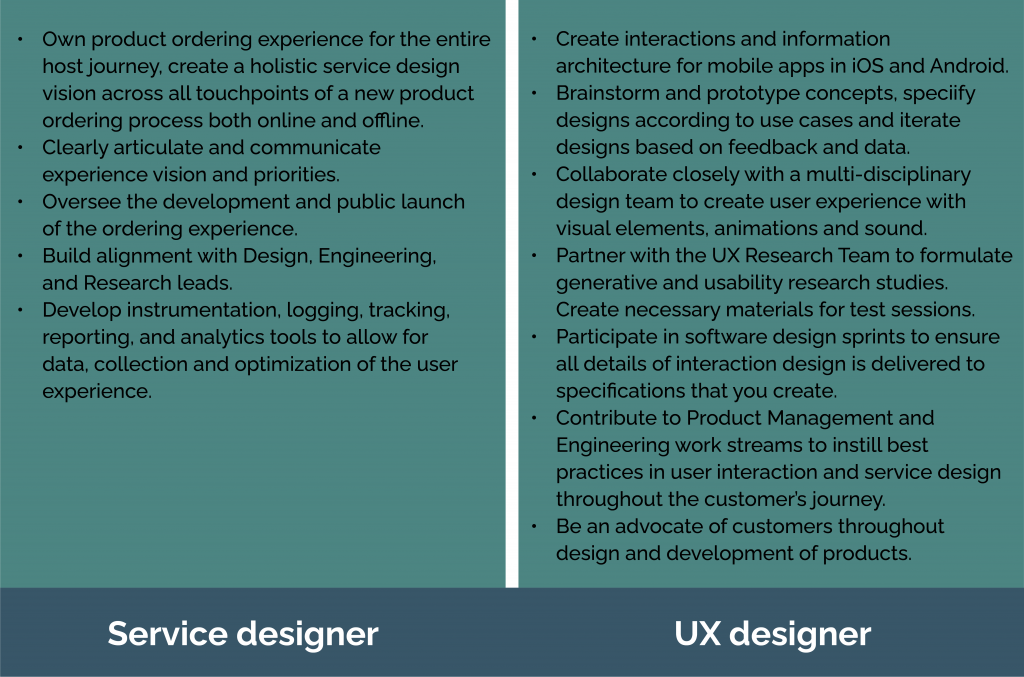 While UX designers create assets and perform the research for those assets, service designers offer more strategic value to the design process.
While UX designers create assets and perform the research for those assets, service designers offer more strategic value to the design process.- UX designers focus on design environment development, which includes products, interfaces, etc. Service designers focus on interactional design and implementation along the entire customer journey for tangible and digital mediums.
- Service designers need to merge strategic, operations, and people management, while UX designers need to manage only the UX design and their outcomes.
Why Service Design?
Bridges Gaps and Breaks Silos: Service design can bridge departmental and interaction-related organizational gaps. It lets teams focus on customer-facing outputs and internal processes as well. Service design is holistic and covers people, processes, and props, in addition to the experience of employees. Service designers can solve problems and gain clarity by questioning prevailing assumptions. They can prioritize functionalities and remove overlaps for simplified and unified services.
Foster loyalty with Customers and Employees: Service design helps improve customer and employee loyalty by getting the service right through various methods and processes. By adopting a service design-first approach, businesses can double their customer and employee retention game.
Improve Business Efficiency: Service design reduces redundancies through streamlined processes and a bird’s-eye view. It lets designers map out the whole internal service processes cycle to render a holistic view of its service ecosystem (services, channels, touchpoints, and business interactions). It is easy to pinpoint inefficiencies leading to wasted efforts and resources. Eliminating redundancies through service design reduces costs and increases efficiency.
The Five Principles of Service Design
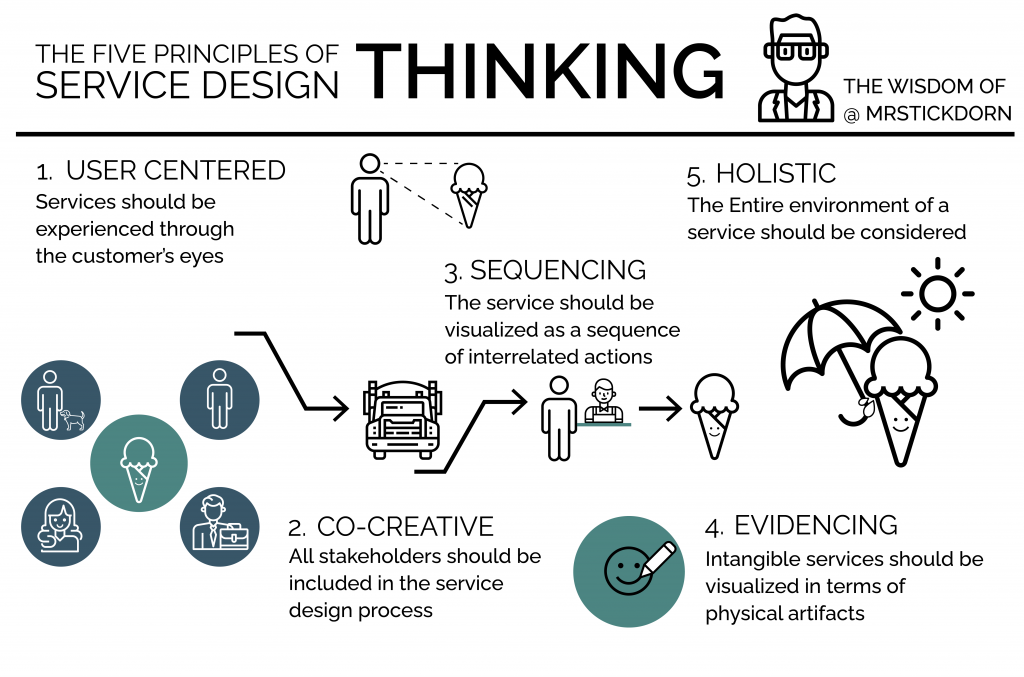 Marc Stickdorn and Jakob Schneider have authored “This is Service Design Thinking, “where they define the following fundamental service design principles.
Marc Stickdorn and Jakob Schneider have authored “This is Service Design Thinking, “where they define the following fundamental service design principles.
- User-centered – Use qualitative and user-centric research to design.
- Co-creative – Include all the relevant stakeholders in the design process.
- Sequencing – Break a complex service into isolated processes and user journey sections.
- Evidencing – Envision service experiences with tangible results and transparency for users to understand and trust brands.
- Holistic – Design for all customer touchpoints, user networks, and experiences.
What Service Design Involves
- Understand the service proposition of the organization or company deeply.
- Analyze the needs of all the customers and service providers (actors) in a service.
- Use a service ecology, blueprint, and user journeys to map out a service.
- Co-create possible solutions or improvements by collaborating with service stakeholders.
- Pilot new service experiences and create prototypes with real customers and staff.
- Zoom in and out constantly between individual touchpoints in detail and the design of the overall service.
Components of Service Design
- Actors (Employees, stakeholders, and users of the service)
- Location (A virtual or physical set-up where customers receive the service or a service/design is tested/researched)
- Props (Objects used during service delivery like Storefronts, Conference rooms, Websites, and Digital files)
- Associates (Partner organizations involved in providing the service, e.g., logistics)
- Processes (Workflows used for service delivery, for example, getting help from a support page, interviewing a new employee, sharing a file)
The Four Pillars of Service Design
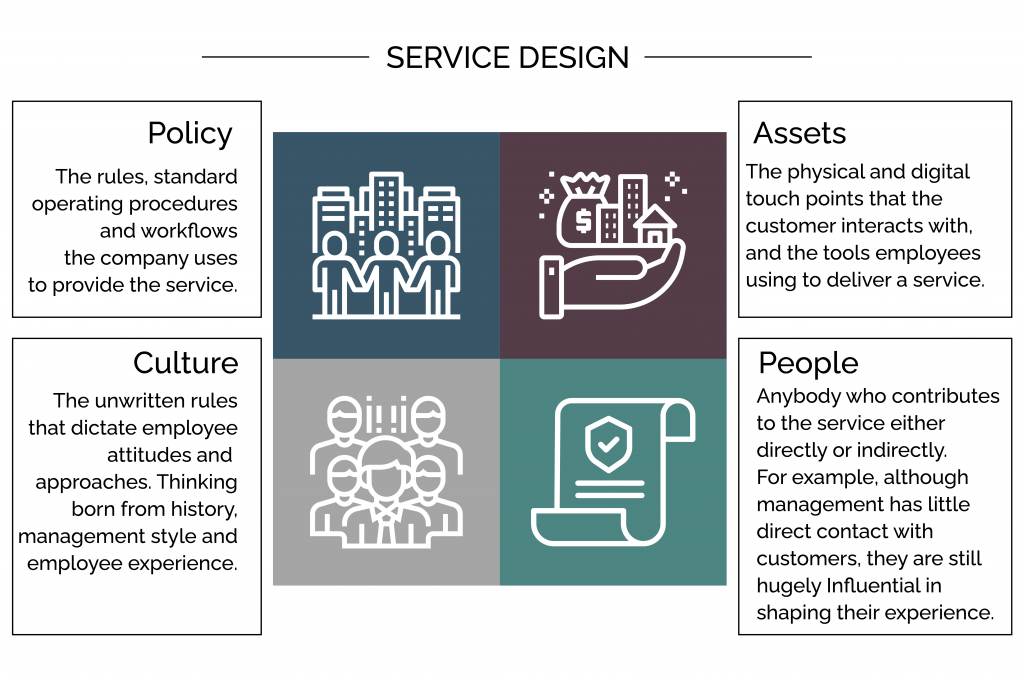 Assets. These represent digital or physical customer touchpoints in a design. At the same time, these include the tools used by employees to deliver the service.
Assets. These represent digital or physical customer touchpoints in a design. At the same time, these include the tools used by employees to deliver the service.- People. This includes any direct or indirect person contributing to the service. These users work in a co-creative environment to influence and shape the design, changes, results, and experiences.
- Policies. The company’s policies, rules, standard operating procedures, and workflows direct the service provision and the customer experience.
- Culture. These include the unwritten rules for employee attitudes and behavior. This is influenced by the company’s history, employee experience, and management style.
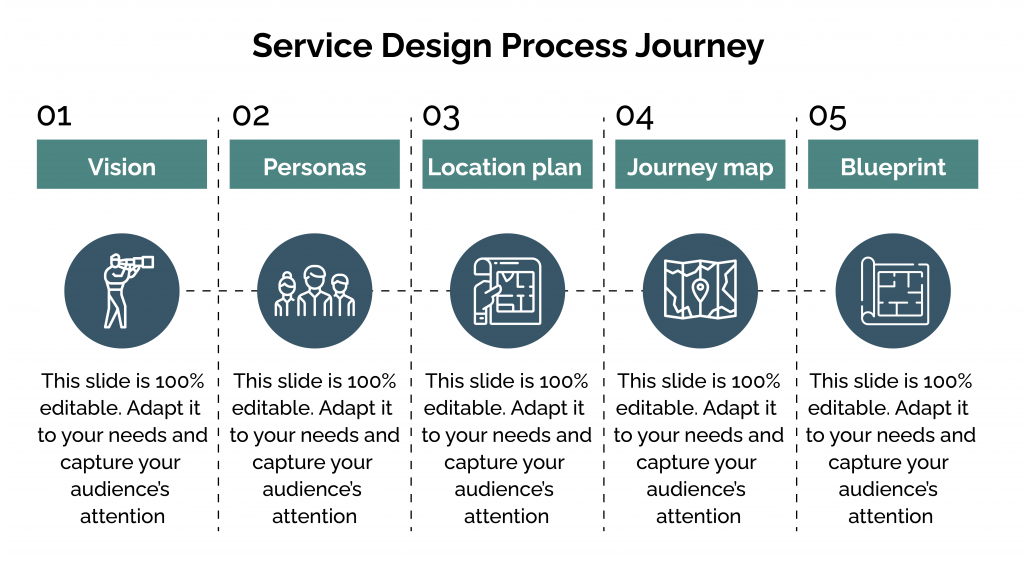 What do Service Designers Create during this Journey?
What do Service Designers Create during this Journey?
- User flows – Define the paths that the user travels, starting from an entry point to the end goal to complete a user interface task.
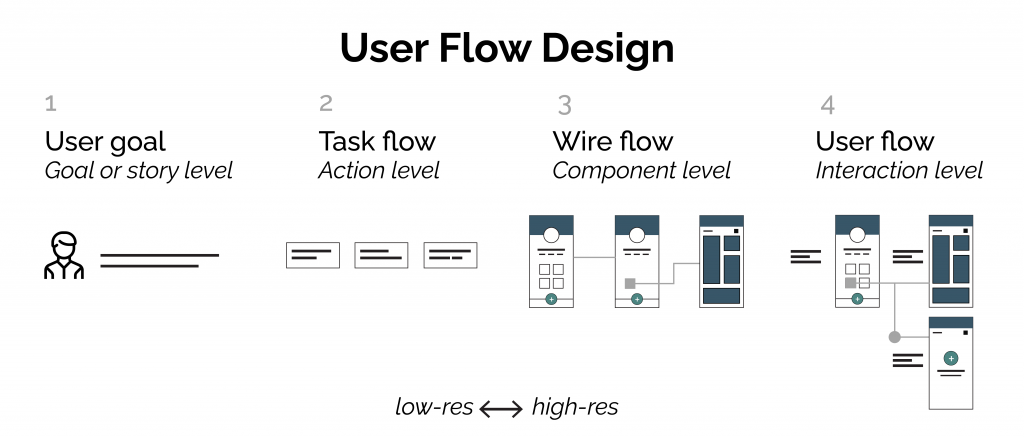 Personas – Defines a character representing a potential user of your website or app to help the design team target designs around users.
Personas – Defines a character representing a potential user of your website or app to help the design team target designs around users.
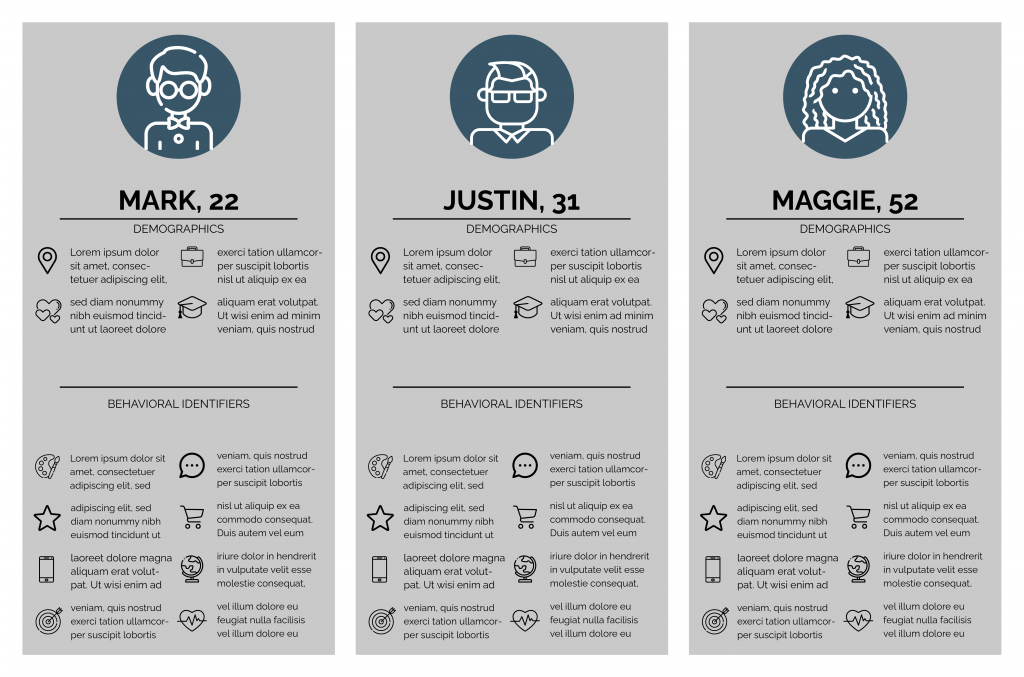 User research – Define the ways and methods of studying users and their requirements to add context, find problems and their solutions.
User research – Define the ways and methods of studying users and their requirements to add context, find problems and their solutions.
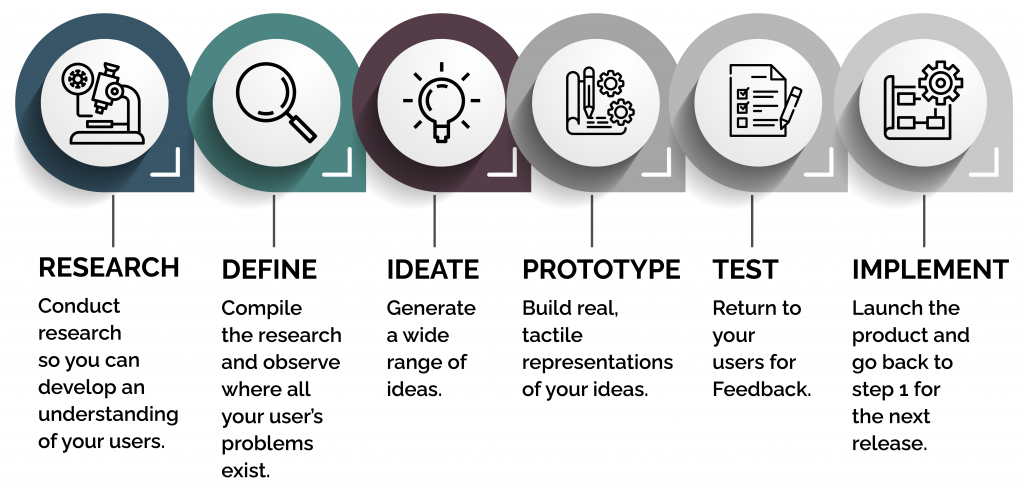 Prototypes – Define the web and mobile replicas of how the result of a product will look, usually without code, including the final UI design and interaction.
Prototypes – Define the web and mobile replicas of how the result of a product will look, usually without code, including the final UI design and interaction.
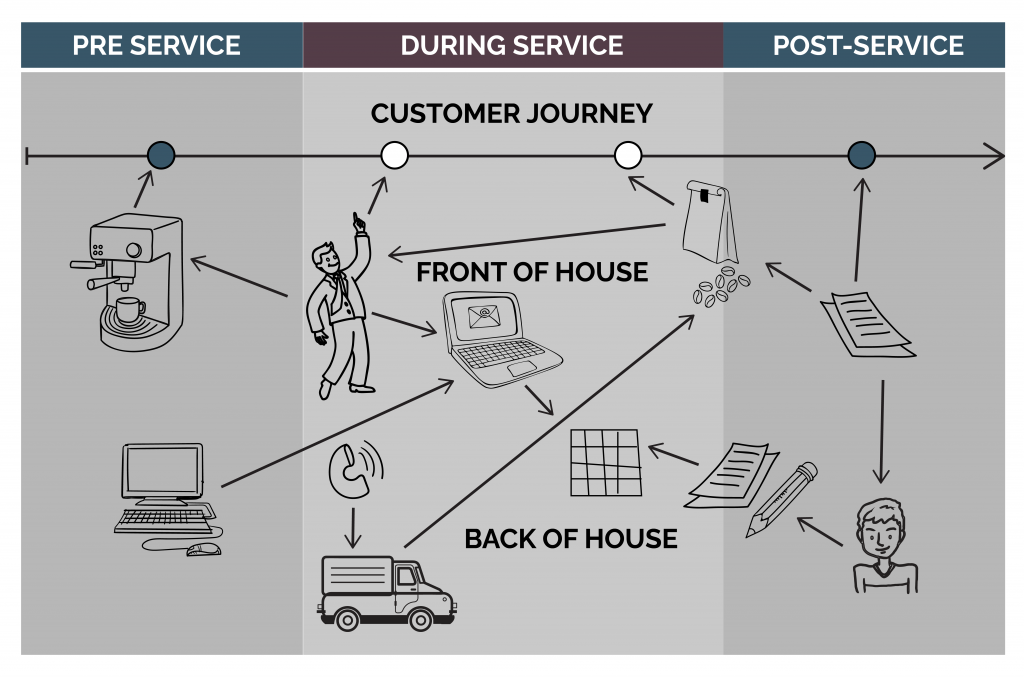 Future-state blueprints – Help visualize a concept’s future state for a new product or service based on a specific customer’s (persona) journey. Their new journey is supported by different employee roles, processes and technologies, business organizations, and third-party partners.
Future-state blueprints – Help visualize a concept’s future state for a new product or service based on a specific customer’s (persona) journey. Their new journey is supported by different employee roles, processes and technologies, business organizations, and third-party partners.
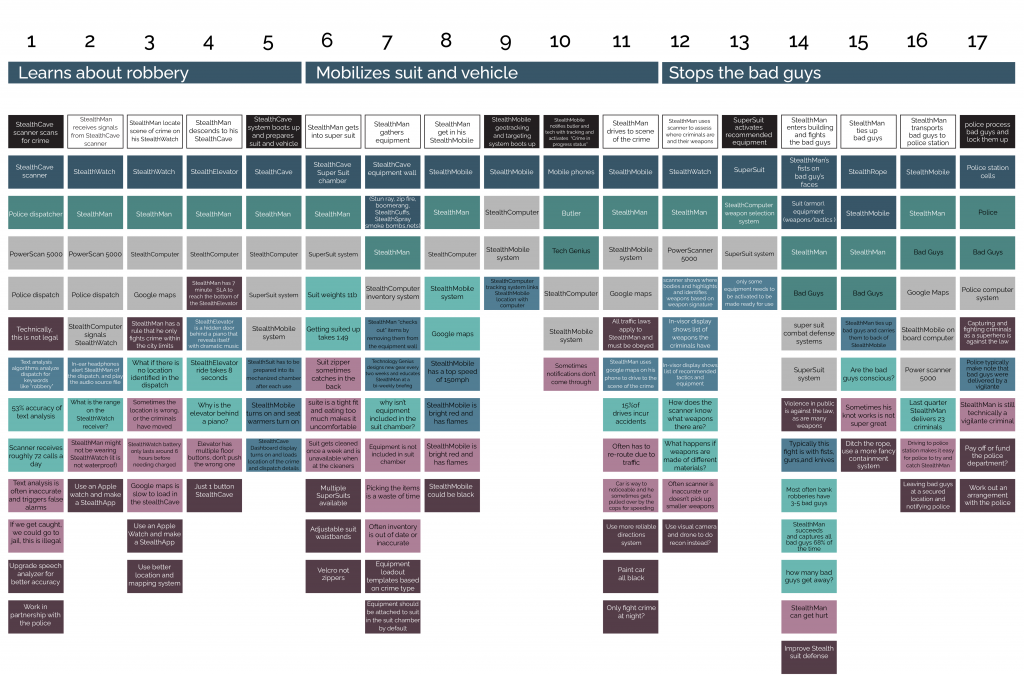 Ecosystem maps – Define the high-level service ecology and interactions between the client and the design groups. This helps assess the symbiotic functioning of products, services, and people.
Ecosystem maps – Define the high-level service ecology and interactions between the client and the design groups. This helps assess the symbiotic functioning of products, services, and people.
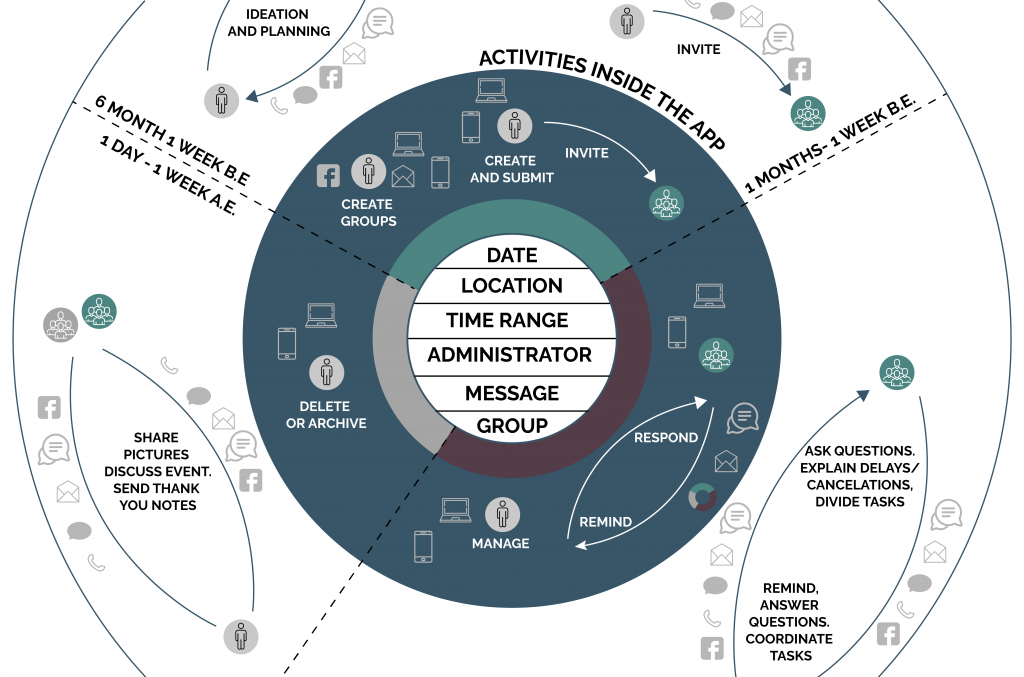 Archetypes – Define different personality traits of all the involved users in the context of their interaction(s) with the design.
Archetypes – Define different personality traits of all the involved users in the context of their interaction(s) with the design.
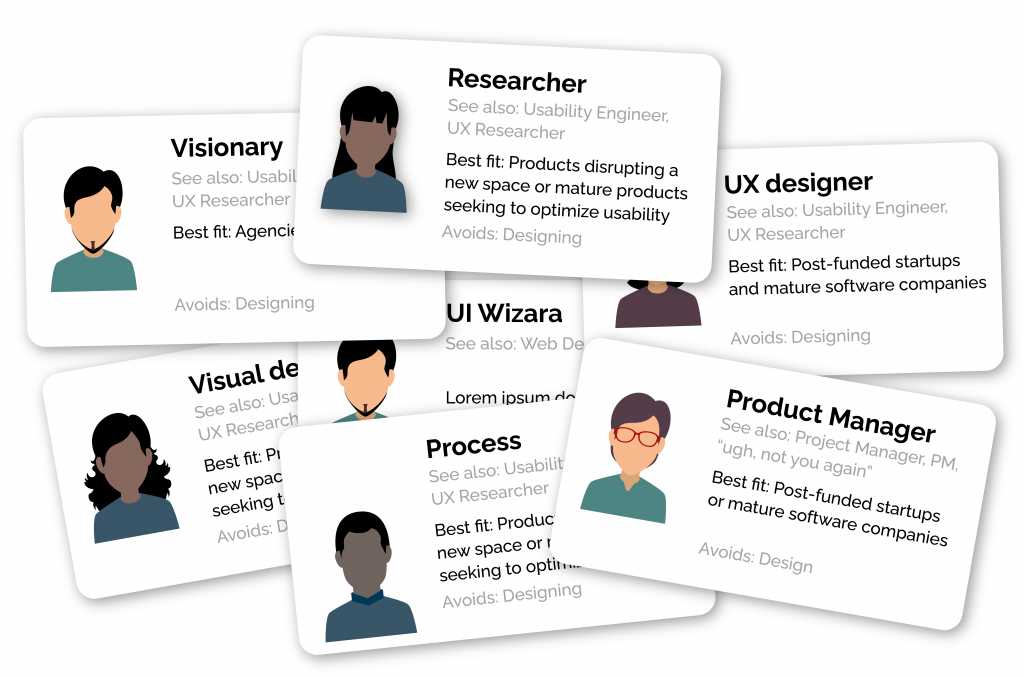 Service storming – Helps observe, understand, ideate, evaluate, and refine services in design for both customers and the organization.
Service storming – Helps observe, understand, ideate, evaluate, and refine services in design for both customers and the organization.
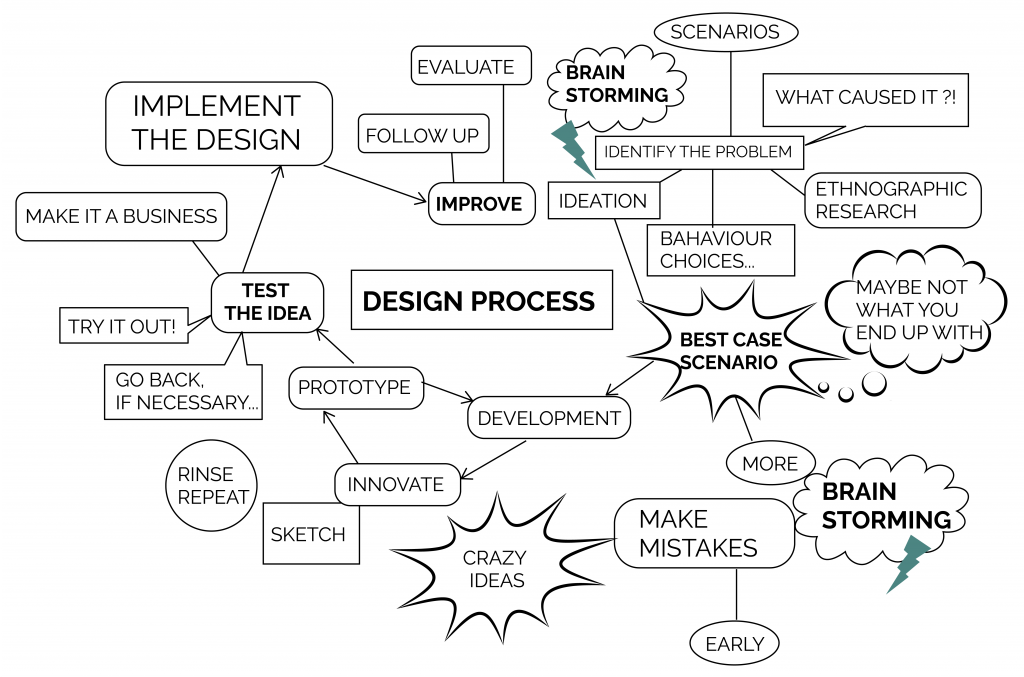 Customer Journey Maps – Define the customers’ touchpoints, critical moments, interaction flows, and barriers.
Customer Journey Maps – Define the customers’ touchpoints, critical moments, interaction flows, and barriers.
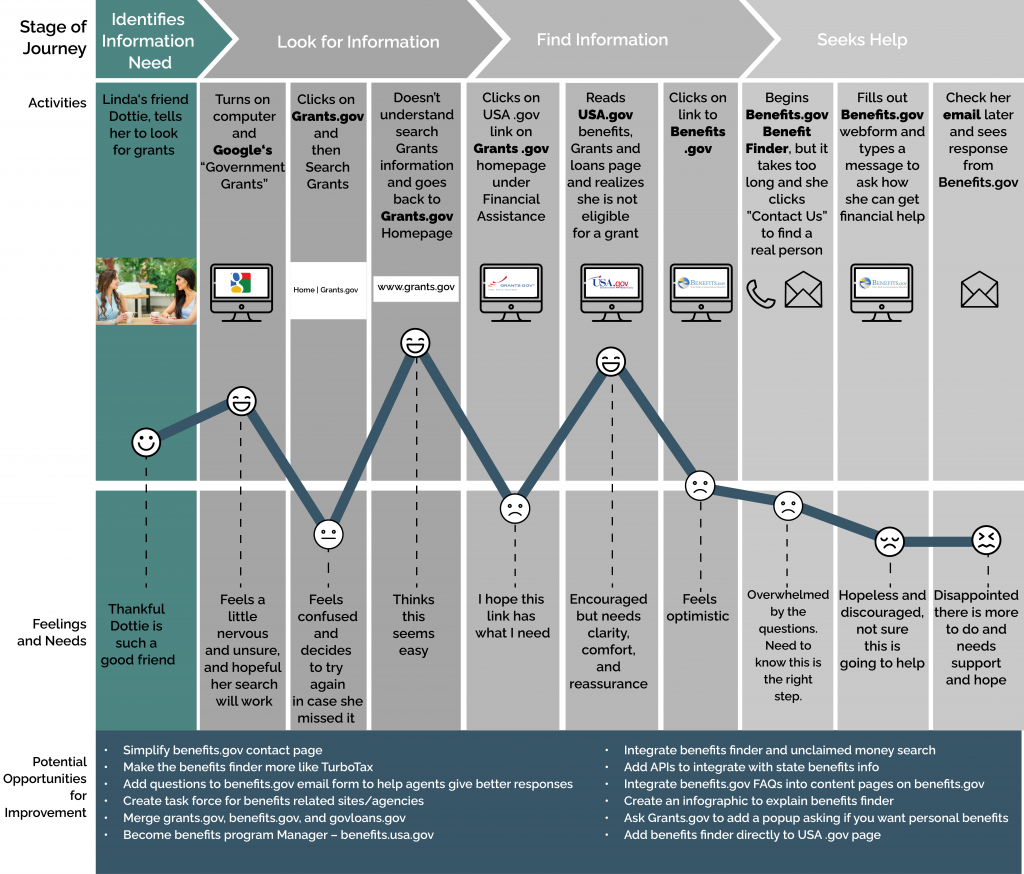 Service blueprints- Represent the elevated forms of customer journey maps to define all the situations when users/customers can interact with brands.
Service blueprints- Represent the elevated forms of customer journey maps to define all the situations when users/customers can interact with brands.
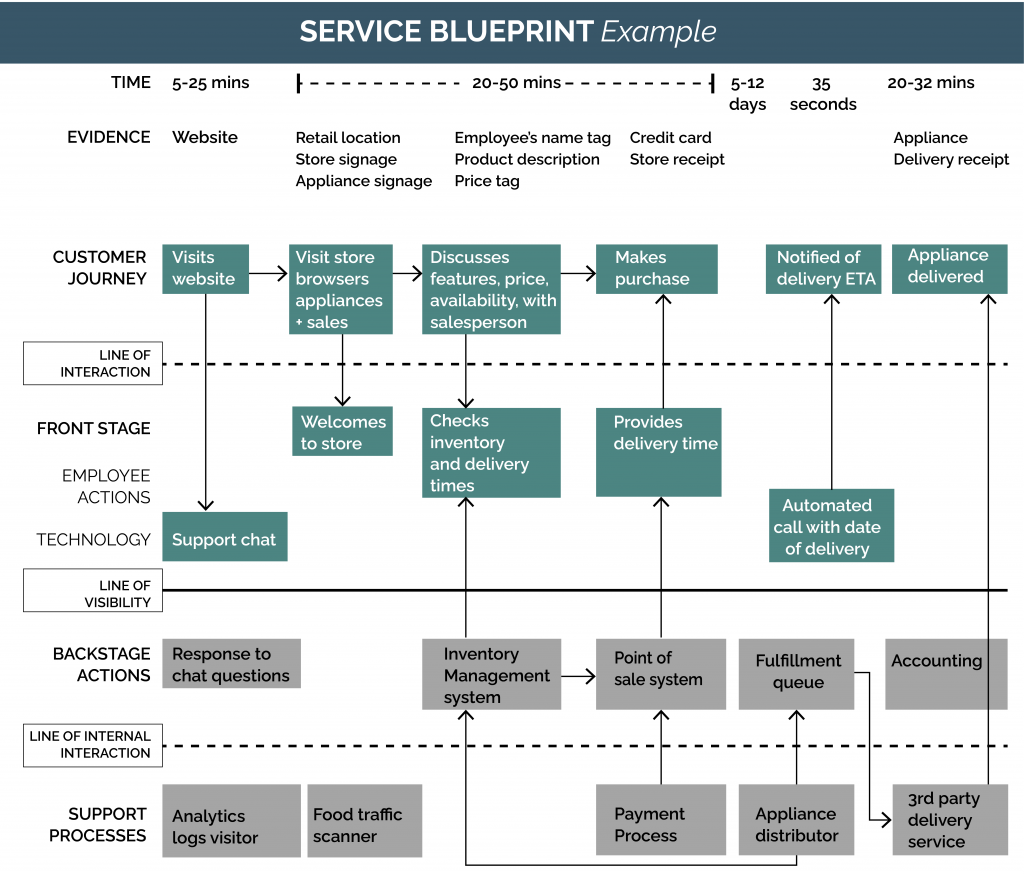 A Typical Service Design Process
A Typical Service Design Process
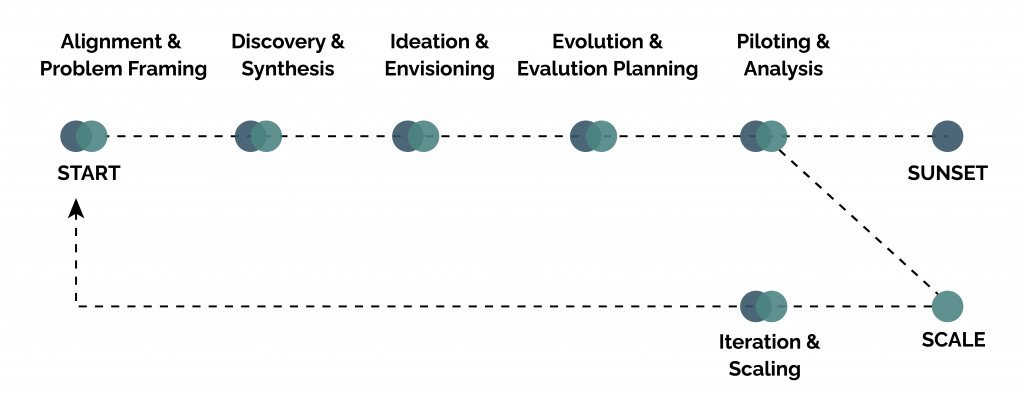 Service Design Methods
Service Design Methods
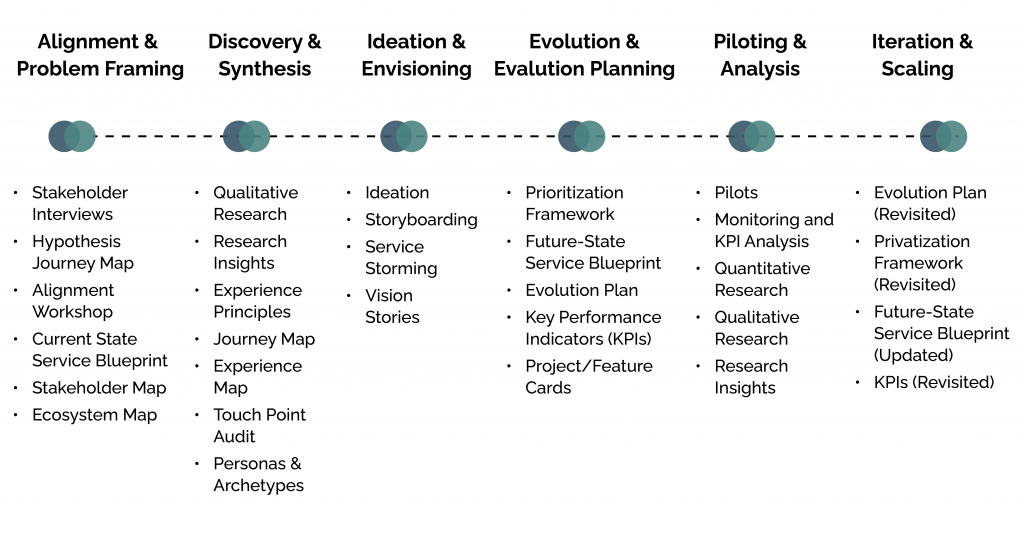
Core Considerations for Service Designing the Complete Experience
Here are some considerations to make if you want to accommodate your customers’ environment(s) and the limitations, motivations, and feelings they’ll have.
- Understand the brand’s purpose, the demand for a product or service, and all the service providers’ ability to deliver.
- Customer needs should be incorporated in the Services’ design rather than shaping it based on the business’ needs.
- Design the services to deliver a unified system rather than individual components that can elevate the overall service performance.
- Services should be designed based on the value delivered to the customers most efficiently.
- Design Services based on the understanding that special events (those causing variations in general processes) will be treated as conventional events (and processes designed to accommodate them).
- Always initiate service design with relevant inputs from the users of the service.
- Build service prototypes and test them before developing them.
- Keep a clear business case and model in place before starting with a service design.
- Develop a Minimum Viable Service (MVS) of a service design and deploy it. Perform iterations and improvements based on user/customer feedback.
- All the relevant stakeholders (external and internal) must be in sync and consulted before designing and delivering the service.
Wrapping up
Service design offers the ability to address design problems in their entirety while capturing all the stakeholders’ perspectives in that service. It helps shape an overall service experience with attention to detail on how the service is delivered to all of the system’s actors. One of the exciting things about SD is that it is vital in a service-oriented world to shape digital experiences and build futuristic digital ecosystems.
Radiant Digital helps enterprises deliver the ‘complete’ experience through service-oriented design. Call us to learn more.

